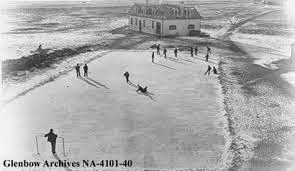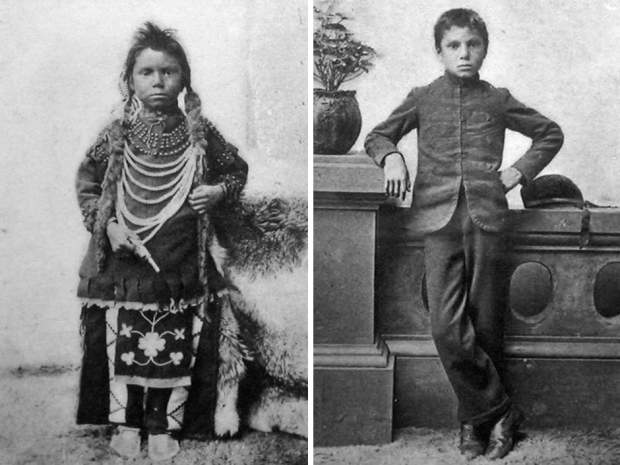MAY 18: Lesson Three - Indian Horse
| Site: | MoodleHUB.ca 🍁 |
| Course: | ELA 20-1 |
| Book: | MAY 18: Lesson Three - Indian Horse |
| Printed by: | Guest user |
| Date: | Friday, 26 December 2025, 9:53 AM |
Introduction
Lesson Four - Indian Horse
Duration - 10 blocks (10 x 80 min + homework)
"When your innocence is stripped from you, when your people are denigrated, when the family you came from is denounced and your tribal ways and rituals are pronounced backward, primitive, savage, you come to see yourself as less than human. That is hell on earth, that sense of unworthiness. That's what they inflicted on us." - Richard Wagamese, Indian Horse

"Saul Indian Horse has hit bottom. His last binge almost killed him, and now he’s a reluctant resident in a treatment centre for alcoholics, surrounded by people he’s sure will never understand him. But Saul wants peace, and he grudgingly comes to see that he’ll find it only through telling his story. With him, readers embark on a journey back through the life he’s led as a northern Ojibway, with all its joys and sorrows.
"With compassion and insight, author Richard Wagamese traces through his fictional characters the decline of a culture and a cultural way. For Saul, taken forcibly from the land and his family when he’s sent to residential school, salvation comes for a while through his incredible gifts as a hockey player. But in the harsh realities of 1960s Canada, he battles obdurate racism and the spirit-destroying effects of cultural alienation and displacement.
"Indian Horse unfolds against the bleak loveliness of northern Ontario, all rock, marsh, bog and cedar. Wagamese writes with a spare beauty, penetrating the heart of a remarkable Ojibway man. Drawing on his great-grandfather’s mystical gift of vision, Saul Indian Horse comes to recognize the influence of everyday magic on his own life." - goodreads review

"There is a longing among all people and creatures to have a sense of purpose and worth. To satisfy that common longing in all of us, we must respect each other." - Chief Dan George
"Two primary objectives of the residential school system were to remove and isolate children from the influence of their homes, families, traditions and cultures, and to assimilate them into the dominant culture. These objectives were based on the assumption Aboriginal cultures and spiritual beliefs were inferior and unequal. Indeed, some sought, as it was infamously said, "to kill the Indian in the child." Today, we recognize that this policy of assimilation was wrong, has caused great harm, and has no place in our country." - Prime Minister Stephen Harper, official apology, June 11, 2008
Read more at: http://www.azquotes.com/quote/1117658
Read more at: http://www.azquotes.com/quote/111765
Some of the issues that FNMI (First Nations Meti and Inuit) people face is a direct result of the disrespect that the dominant culture holds toward them.
Consider your study of "Walk Well, My Brother", wherein Charlie Lavery, initially, viewed Konala with anger and contempt and the northern tundra as a barren wasteland. His experiences with Konla were so significant, however, that his assumptions and attitudes toward her, her people, and her environment change drastically.
What kinds of assumptions and attitudes do you hold that influence your environment and the way you interact with various people? Have you ever thought about why you hold the attitudes that you do? How can YOUR attitudes be a threatening force toward others?
Residential School System
What was the Indian residential school system?
The term residential schools refers to an extensive school system set up by the Canadian government and administered by churches that had the nominal objective of educating Aboriginal children but also the more damaging and equally explicit objectives of indoctrinating them into Euro-Canadian and Christian ways of living and assimilating them into mainstream Canadian society. The residential school system operated from the 1880s into the closing decades of the 20th century. The system forcibly separated children from their families for extended periods of time and forbade them to acknowledge their Aboriginal heritage and culture or to speak their own languages. Children were severely punished if these, among other, strict rules were broken. Former students of residential schools have spoken of horrendous abuse at the hands of residential school staff: physical, sexual, emotional, and psychological. Residential schools provided Aboriginal students with an inferior education, often only up to grade five, that focused on training students for manual labour in agriculture, light industry such as woodworking, and domestic work such as laundry work and sewing.
Residential schools systematically undermined Aboriginal culture across Canada and disrupted families for generations, severing the ties through which Aboriginal culture is taught and sustained, and contributing to a general loss of language and culture. Because they were removed from their families, many students grew up without experiencing a nurturing family life and without the knowledge and skills to raise their own families. The devastating effects of the residential schools are far-reaching and continue to have significant impact on Aboriginal communities. Because the government’s and the churches’ intent was to eradicate all aspects of Aboriginal culture in these young people and interrupt its transmission from one generation to the next, the residential school system is commonly considered a form of cultural genocide.
From the 1990s onward, the government and the churches involved—Anglican, Presbyterian, United, and Roman Catholic—began to acknowledge their responsibility for an education scheme that was specifically designed to “kill the Indian in the child.” On June 11, 2008, the Canadian government issued a formal apology in Parliament for the damage done by the residential school system. In spite of this and other apologies, however, the effects remain.
http://indigenousfoundations.arts.ubc.ca/home/government-policy/the-residential-school-system.html
WIKIPEDIA
Canadian Indian residential school system
Sixties Scoop
DOCUMENTS
Canada's Race Problem
Key Findings
VIDEOS
Resources
Background and Discussion Guide
Indian Horse
Websites
Richard Wagamese biography
Asubpeeschoseewagong First Nation
Lesson
Read the page describing the Residential School System, perusing the documents linked at the bottom.
Study the discussion/background document on the Resources page.
Peruse the website providing a biography of Richard Wagamese, author of the novel.
Peruse the website of the Asubpeeschoseewagong First Nation, where the novel is set.
Read through the novel, Indian Horse at the rate of 45 pages per day, which is five days.

Assignment
(100 marks)
Open a new PPT document. Label it E201U4L3surname
In this document, complete the assignment as outlined below.
Submit this assignment using the Dropbox for U4L3 IH/TWM symbol
Much literature reflects the struggle of the individual to cope with or overcome threatening forces.
Consider what author Richard Wagamese has to say about the individual in the midst of threatening forces in his novel, Indian Horse. You are going to focus on ONE symbol in the novel that ties together what he has to say.
In your presentation, you must do the following:
- Slide 1: Choose ONE of the symbols in Indian Horse. Explain in a paragraph of at least 200 words, how this symbol ties together the novel. Why is it important?
- Slides 2-6: FIVE sets of quotations, that reference your chosen symbol, from the novel illustrated by photos. (One set per slide.)
- Slides 7-11: What does EACH of the quotations, which references your chosen symbol, add to the novel? Discuss each one separately in at least three sentences.
- Slides 12-16: Why did you choose EACH one of the photos that you did? Discuss each one separately in at least three sentences.
- Slide 17: Why did you place your images in the order that you did? What effect you were you attempting to achieve? Discuss in a paragraph of at least three sentences.
- Slide 18: How does this symbol illustrate the individual in the midst of threatening forces? Provide a thesis statement to answer the question, "What idea does author Richard Wagamese develop regarding an individual's capacity to prevail over threatening forces?" Explain your thesis in a paragraph of at least three sentences.